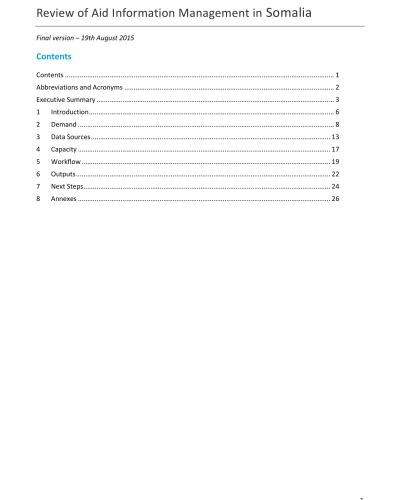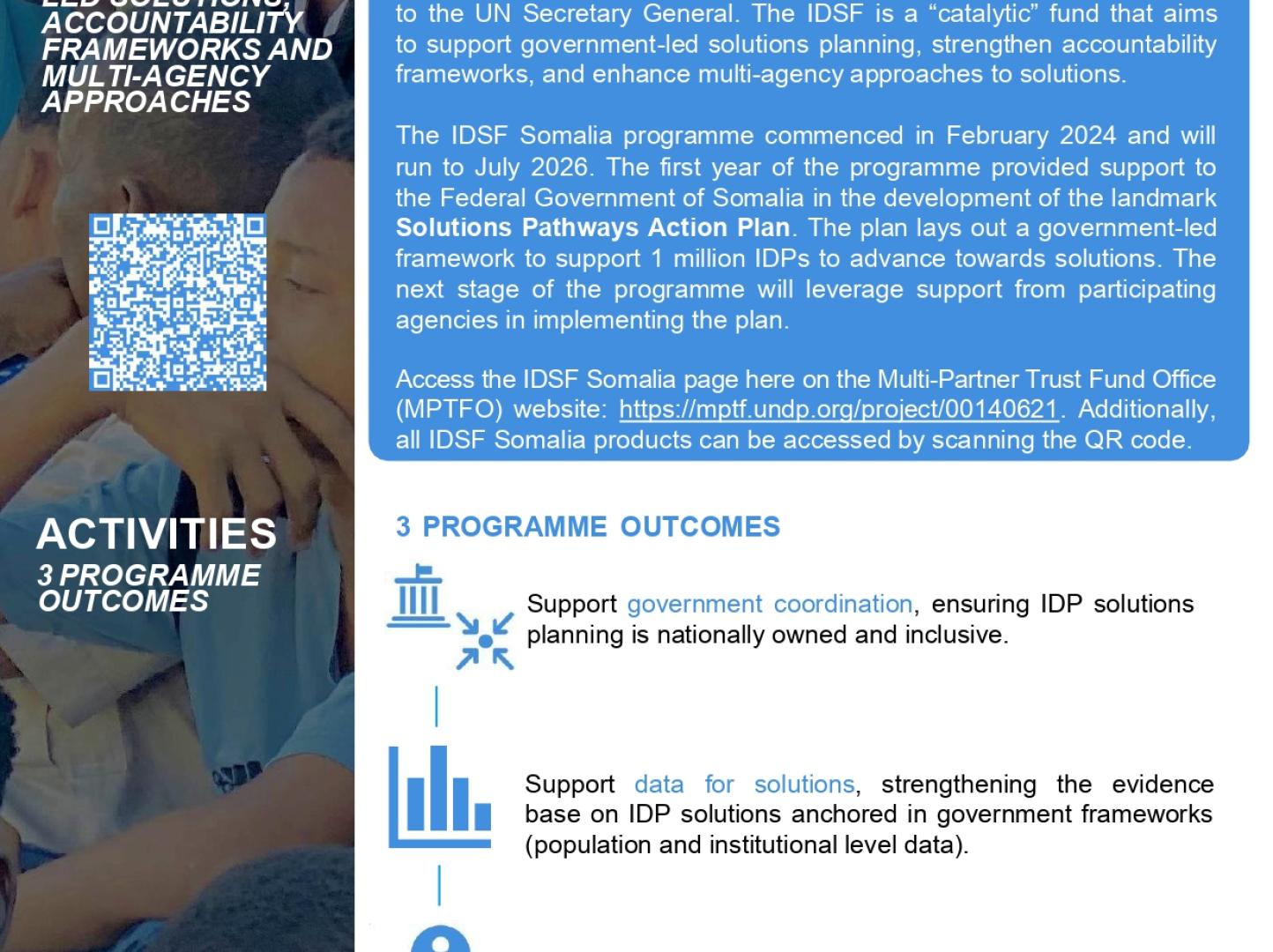Review of Aid Information Management in Somalia

Monitoring aid flows is important. It facilitates greater transparency and accountability between the government and the international community as well as with the citizens of Somalia. Analysis of aid flow data is an integral component of national planning and budgeting, aid and debt management, and monitoring and evaluation (M&E). Aid flows are also used for monitoring the implementation of the Somali Compact. With this multiplicity of purposes, a well-functioning aid information management system (AIMS) can serve as an important resource for multiple stakeholders within government, the international community and the general public.
The current system for tracking aid flows is currently not working. Government authorities and development partners have expressed dissatisfaction with the existing Development Assistance Database (DAD) established with UNDP support in 2011. The platform itself has been criticized for being overly complicated and in recent years, there has been very limited use of the data collected both within government and by the international community. Tracking of aid flows has been largely stymied or replaced by other ad-hoc systems.1
Experience shows better aid data is possible in Somalia. Between June and November 2014, the Aid Coordination Unit (ACU) within the FGS conducted an interim aid mapping exercise with the support of the World Bank requesting a “focused” dataset from development partners collected via Microsoft Excel templates. The high level of coverage and quality of the reported data demonstrated willingness to report amongst development partners if provided with the right tools, methodological and institutional support, as well as a reduced reporting burden, alongside high-level political engagement. The exercise also demonstrated an interest from the FGS to enhance its on-going monitoring of aid flows. It was the first time the FGS had had access to a consolidated overview of reported aid flows and allowed them address several aid issues that had previously been hidden.
Somalia can learn from the lessons of AIMS in other countries, which have evolved significantly in recent years. A number of aid recipient countries, including several fragile states, have well-functioning AIMS. Lessons from these systems indicate that successful AIMS rely not only on technological solutions but on establishing the right incentives, institutional arrangements to encourage participation and reporting, and a “demand-driven” approach to collecting, verifying and disseminating data. In particular, experiences show that aid data must inform key coordination, planning and budgeting processes in order to create a sustainable government demand and to incentivize development partners to report timely and accurate data.
Recognizing the potential for improved aid data, government authorities requested support from UNDP and the World Bank to conduct a review of the DAD, examining both the technical platform and the institutional arrangements for collecting and sharing data, and to develop a pragmatic strategy for aid flow monitoring that is adapted to the special needs of the Somali context. This resulting review was based primarily on consultations carried out between December 2014 and March 2015 with AIMS stakeholders including government and development partners, system providers, as well as AIMS experts and practitioners in multiple countries.






